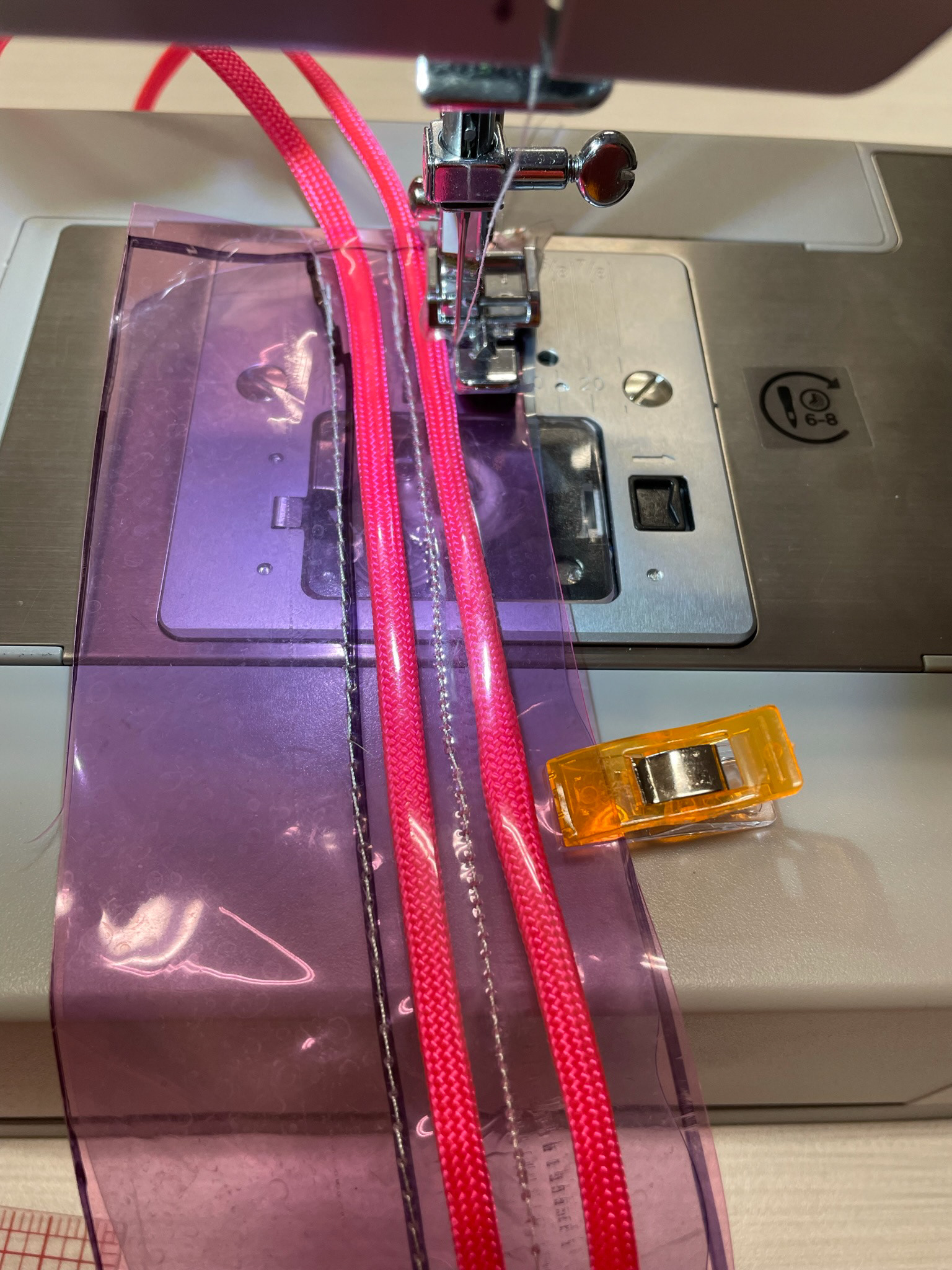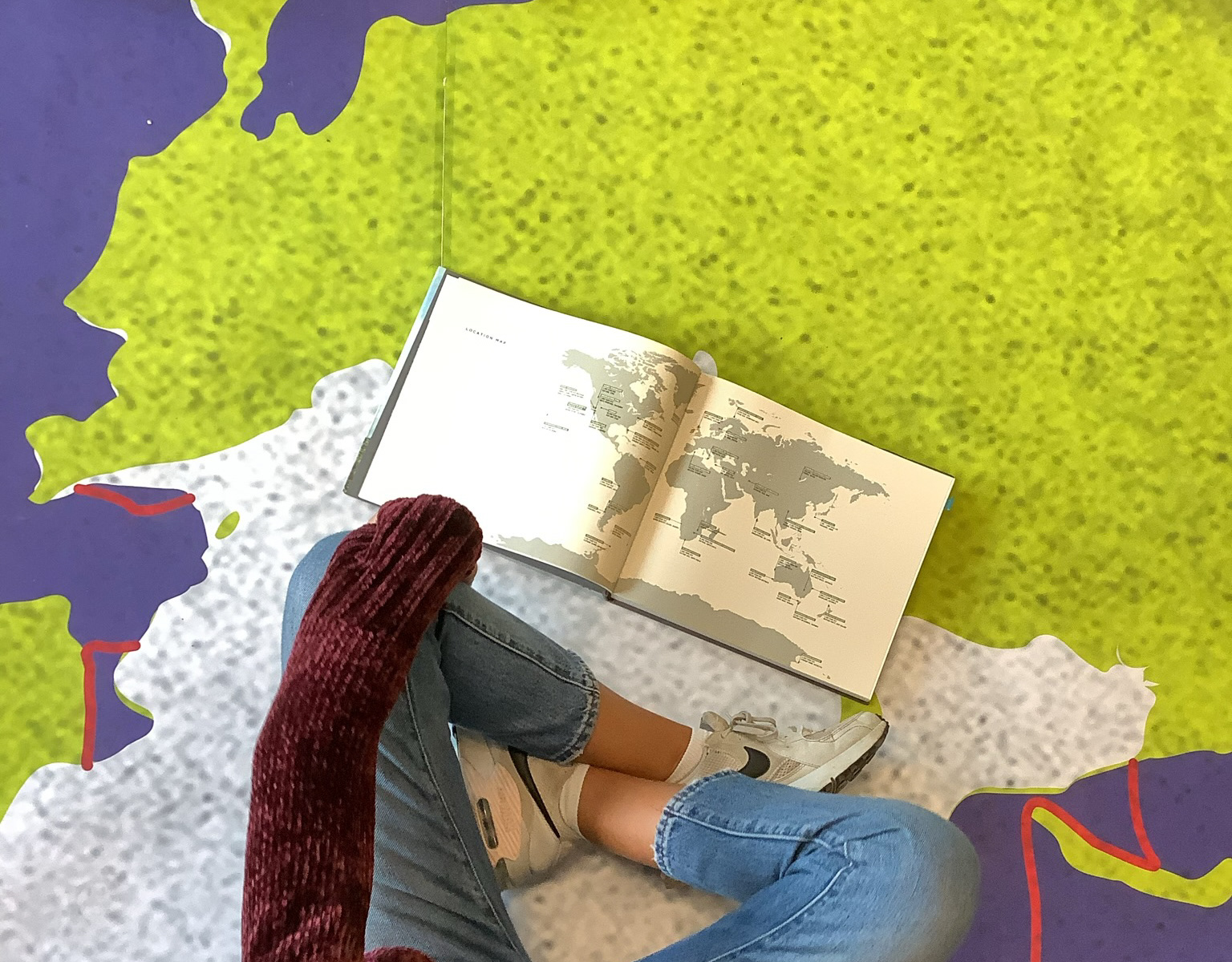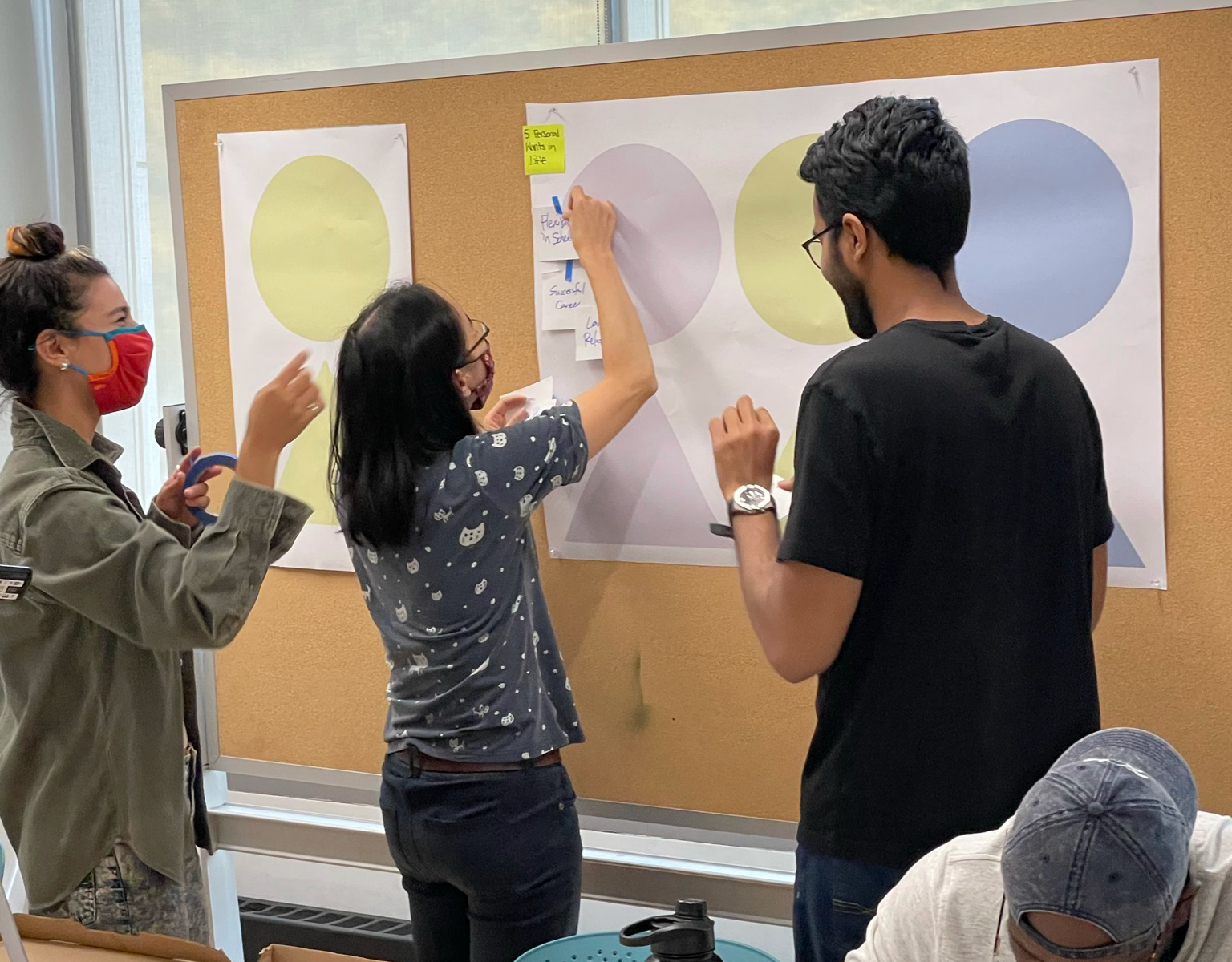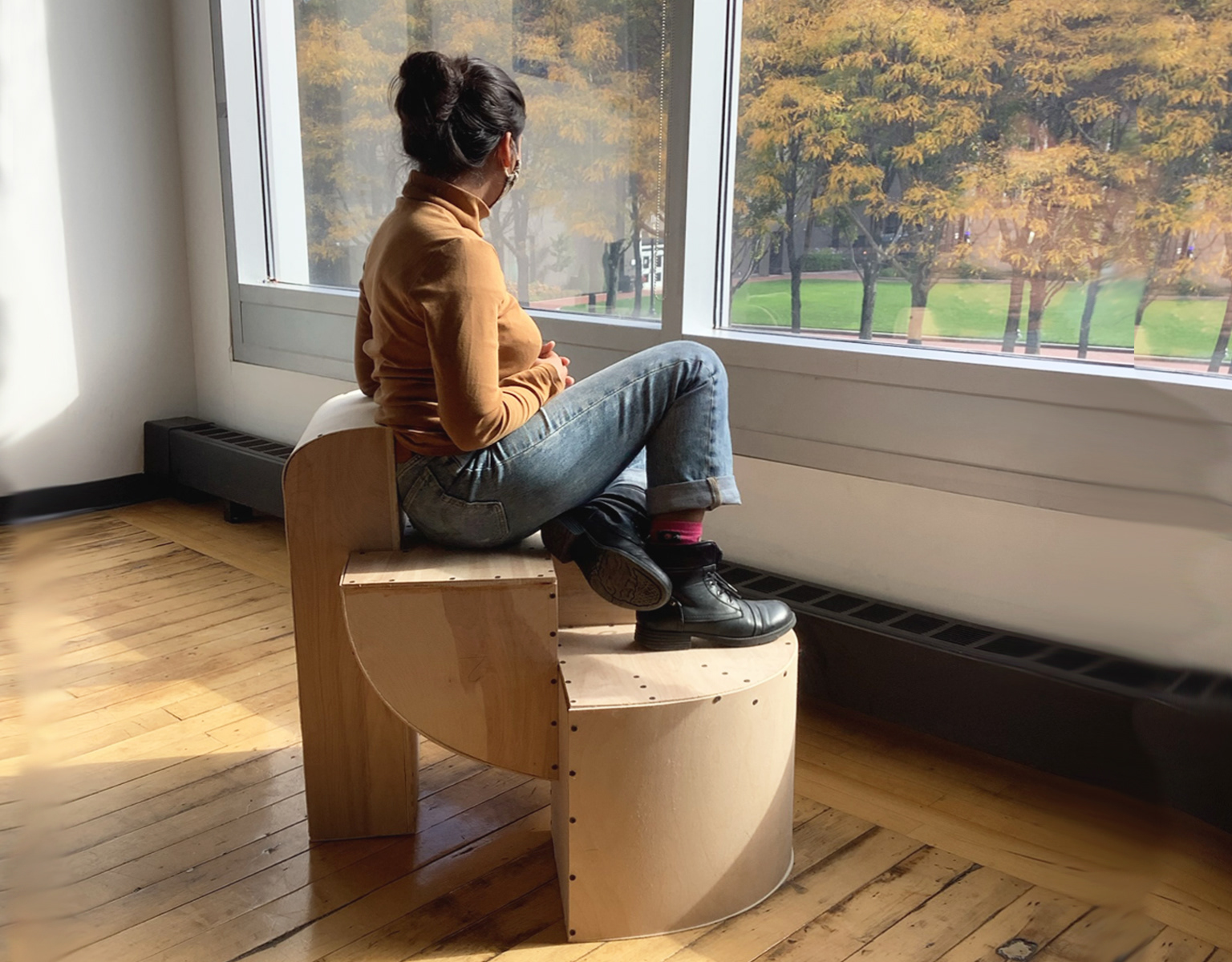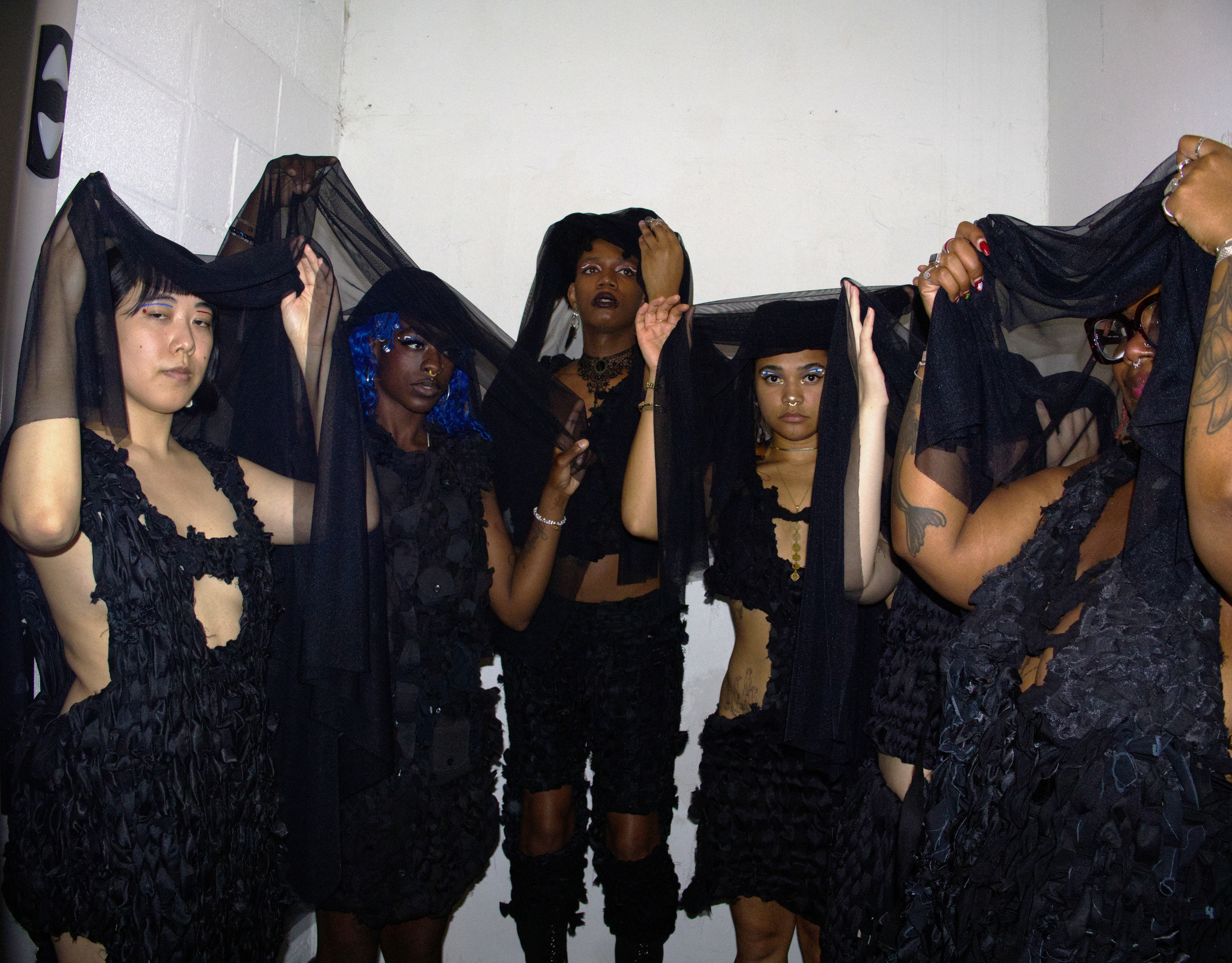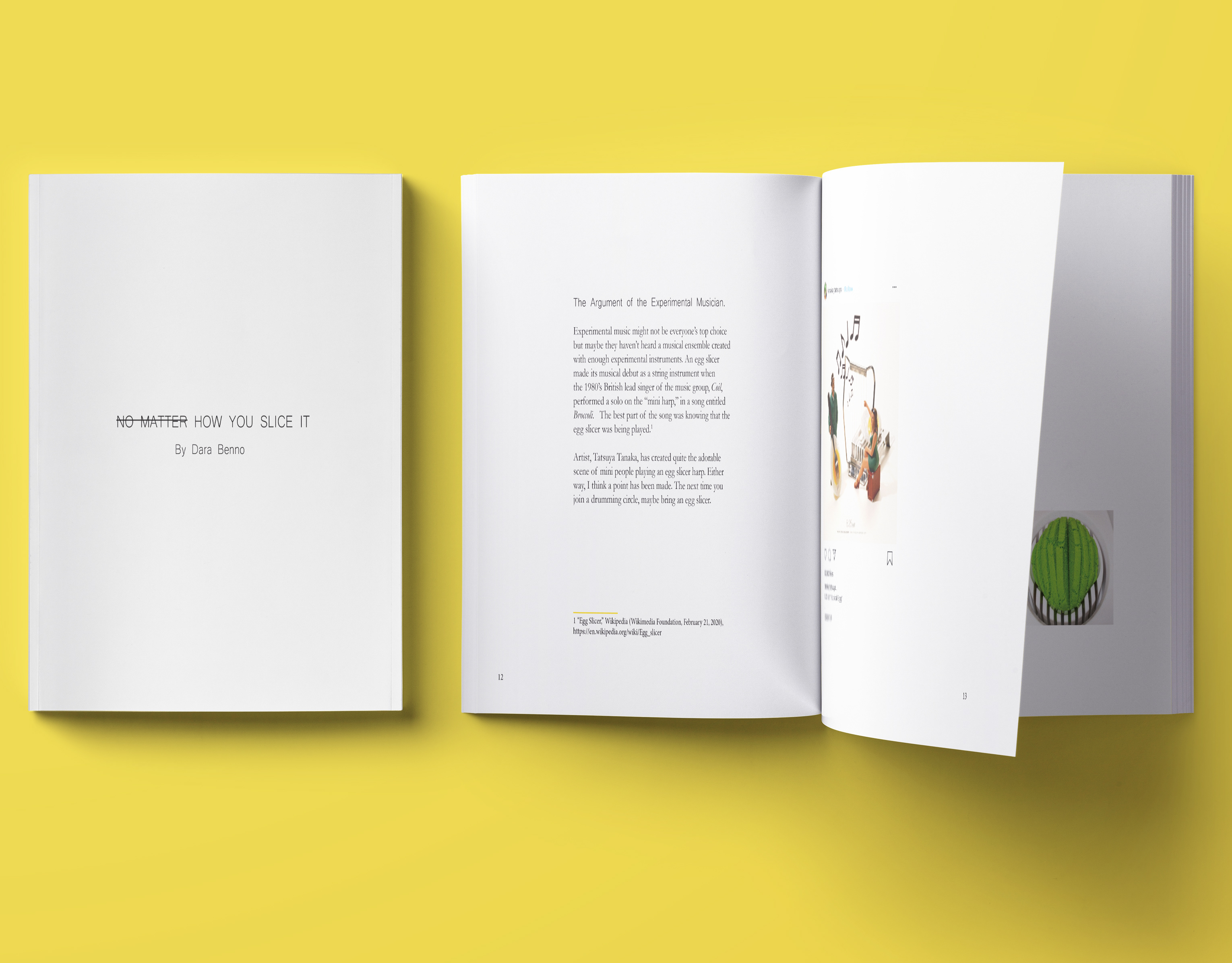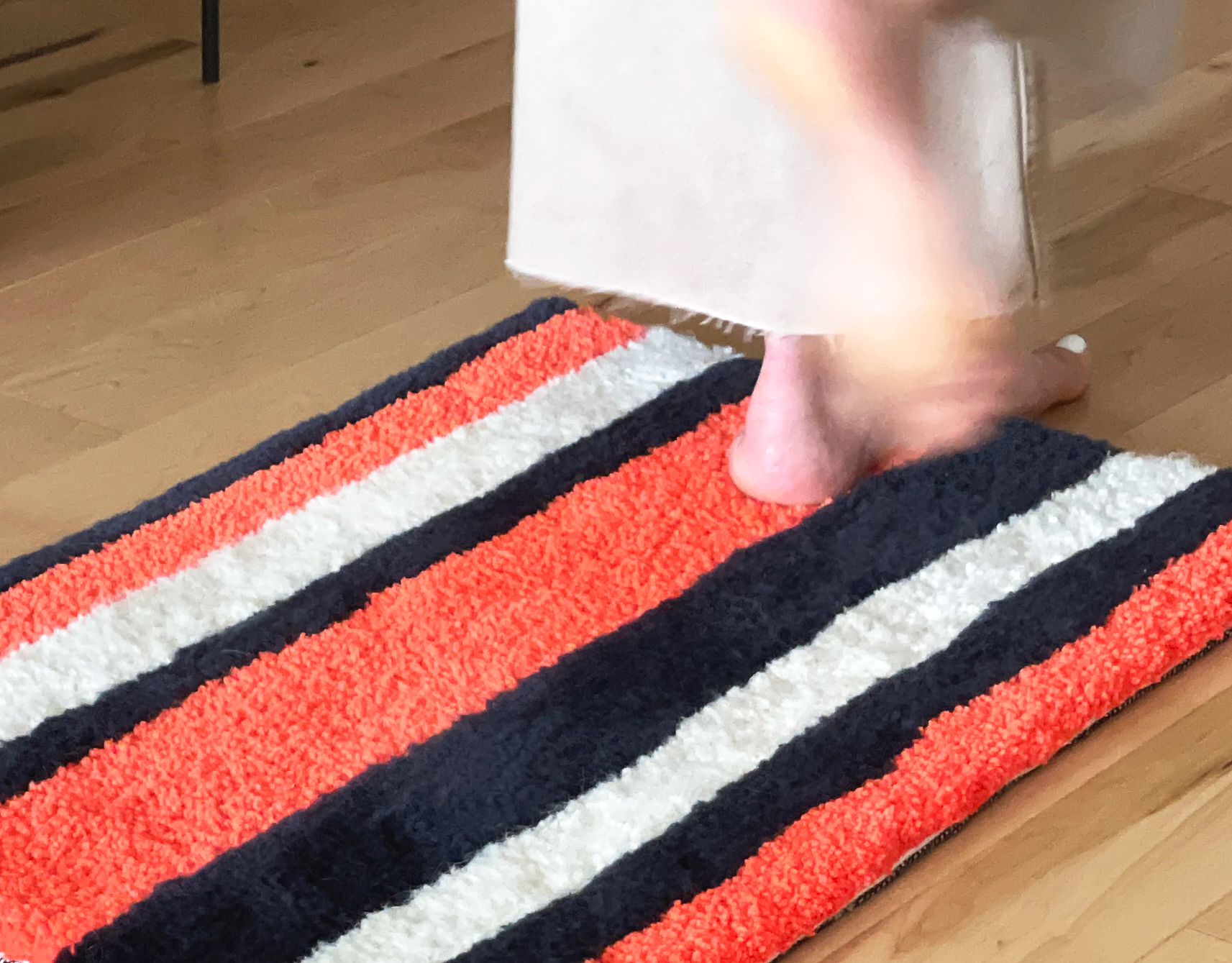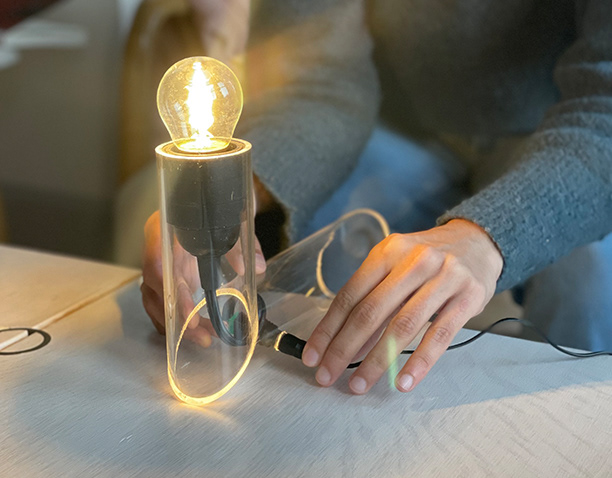What does it mean to adapt to a changing world?
Climate change is altering the world as we know it. We live in a chronic state of emergency. It's easy to slip into a downward spiral of despair or ignore what we know to be true in order to carry on with our day-to-day responsibilities. By facilitating a complete recognition and heightened awareness of the common threats brought on by the climate crisis, we can begin to make the mental shift toward living in a new normal.
My thesis body of work, Ready Made, Made Ready, rejects a dissociative attitude and seeks to shift exceptionalist feelings of entitlement to a focus on building resilience for the future. Culminating in a lifestyle collection titled ICOE (In Case of Emergency), mundane objects are merged with emergency capabilities, questioning how to integrate elements of preparedness into our everyday lives and how to increase a sense of agency in a world where we lack control.
ICOE garment worn walking through the Fox Point hurricane barrier in Providence, RI.
Video still by Matthew Watson
Model: Louise Starr
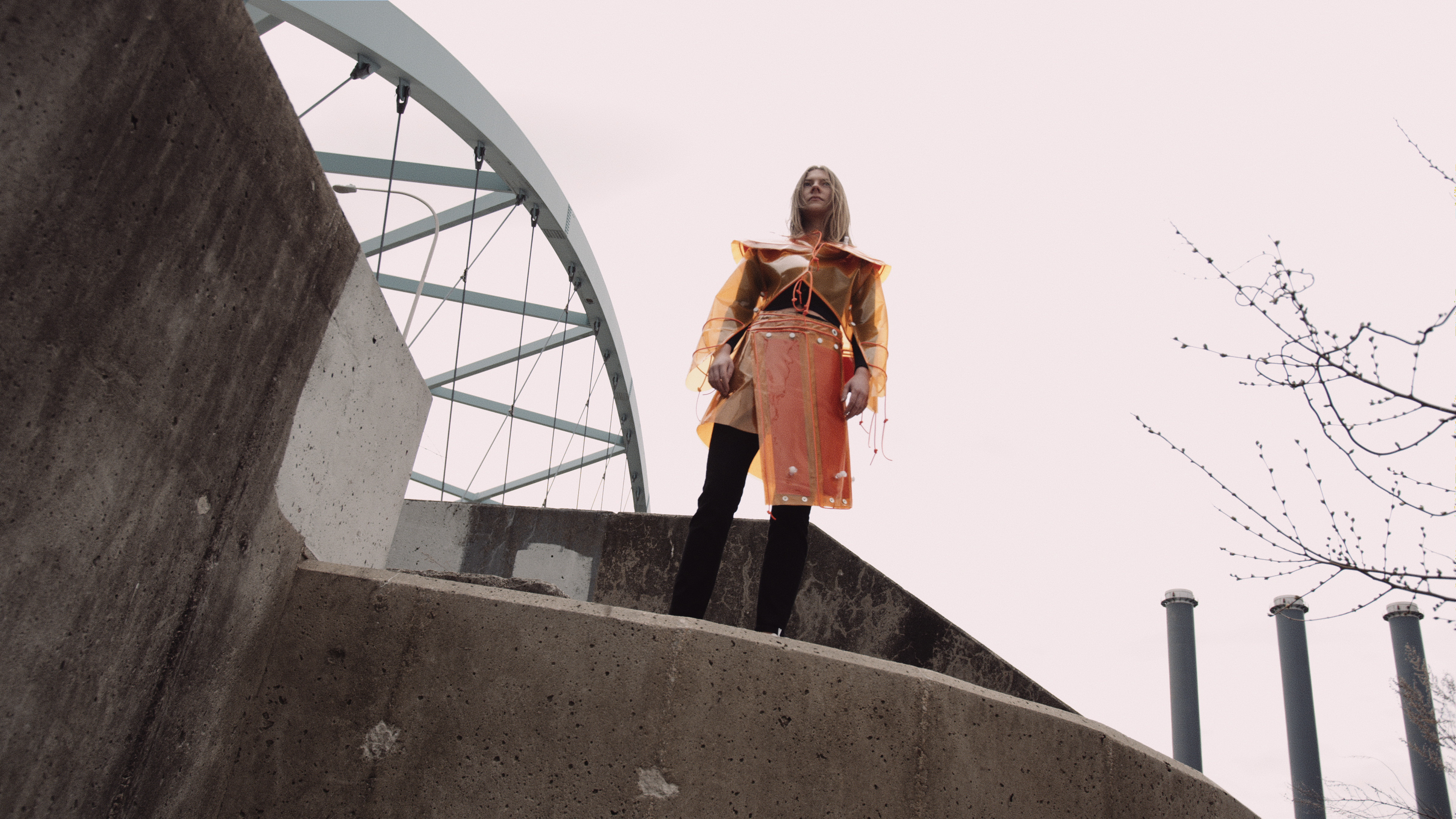


Flood garment worn as a statement piece declaring a state of climate emergency in day-to-day life.
Challenge
Whether or not we incorporate a response system to risk into our daily lives will directly affect how we will be able to adapt to the imminent threats brought on by climate change. With rising sea levels and increasing record rainfall, coastal cities aren't the only high risk zones for flooding. Lacking the infrastructure necessary to feel prepared for climate emergencies, how can our existing lifestyles provide comfort in the embodied acknowledgment of disaster awareness and incorporate elements of preparedness into daily life?
Research + Insights
In thinking about disaster preparedness, one might assume large investment, major life change, seclusion and hoarding of resources. But what about the examples we are familiar with and already have integrated into our existing lifestyles - like first aid kits and fire extinguishers? These normalized "prepper" items help people to feel safe not only because of how they function, but also through the cognitive element of being more prepared through an accepted awareness of risk.

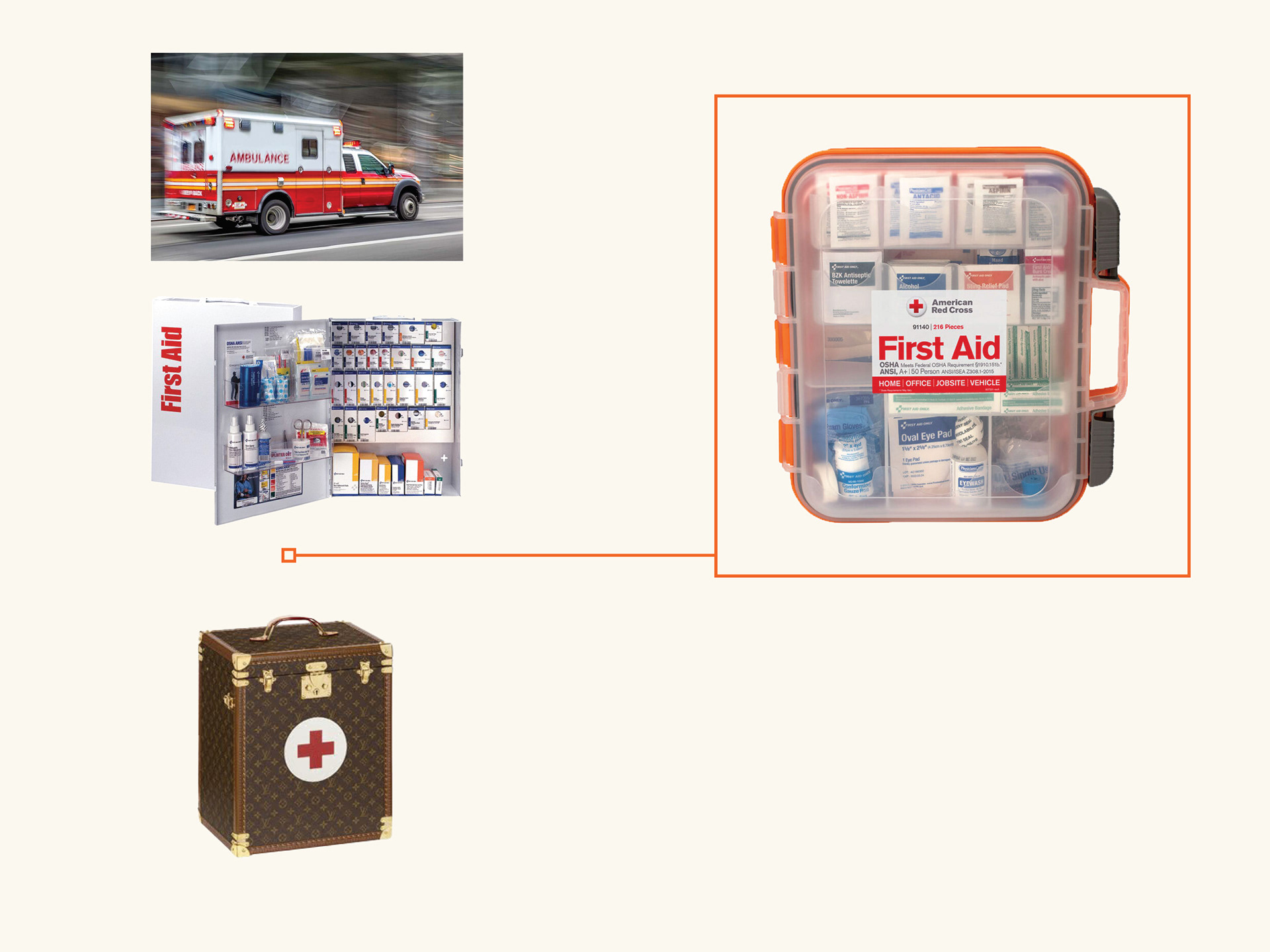
Analysis of emergency objects that have been normalized and incorporated into everyday life.
People rely on their cognitive understanding of the world around them to shape their existence and place in the world. By acknowledging rapid climate change as a real and current circumstance, we can move away from overwhelming distress, find comfort in a new mindset and hope in opportunity for proactive measures. By making a mental shift and rejecting a dissociative attitude, we can move past denial and feel a sense of agency in acceptance, ready to reflect on what life could be like living in a new normal.
As a transformative process, adaptation requires us to rethink life as we know it and make conscious adjustments to our life-styles that we have grown so accustomed to. What we can learn from our recent experience with masks during the Covid-19 pandemic is that change doesn't have to mean losing a sense of self. By taking a cognitive approach to adaptation, we are able to acknowledge the circumstances we are in as real and move past what we can't control - reevaluating how we cope with adverse circumstances and finding opportunity for growth.
Opportunity
If we follow a format of adapting safety gear to more accessible, daily items that are already a part of our existing routines, we can begin to incorporate elements of climate disaster readiness into daily life without feeling like we are losing a sense of self. By utilizing lifestyle as a means for accessible integration of preparatory items, a mental shift is facilitated from one of dissociative tendencies to one that empowers the individual through facing the reality of the world around us.
Incorporating "just in case" items into our everyday lives helps to not only provide a sense of security in knowing that there is a form of aid available at all times but also allows for a considered rehearsal of emergency scenario actions and promotes open conversation with others regarding shared fears and uncertainties.
Analysis of how flotation and rescue objects might become more normalized and incorporated into everyday life in response to more frequent flooding and natural disaster.
Left: User journey mapping
Right: Discussion about user engagement and participatory mapping session
Design Outcome
ICOE transforms something as mundane as a shower curtain into an inflatable flood garment in the event of a sudden natural disaster, helping not only the individual feel prepared but also empowered to take action in the moment of crisis. Tear-away panels that convert into flotation bands and tubes for others in need offer elements of community resilience, embodying a shift away from an individualistic mindset. Instructional icons on the curtain itself allow for a mental rehearsal of steps to take in an emergency flood scenario, adding to feelings of preparedness and easing sentiments of anxiety and despair.
ICOE shower curtain to garment transformation.
Cinematography by Matthew Watson.
Model: Dara Benno
ICOE Statement Garment.
Cinematography by Matthew Watson.
Model: Louise Starr
In the moment that the shower curtain is torn down and the garment is removed, a state of emergency is declared by the individual. By removing the coat and waist wrap on a "regular" day and choosing to wear them, the ICOE object becomes a statement garment, using fashion and self expression as a public mode of not only sparking dialogue surrounding the climate crisis but also acting as a reminder of accountability and community resilience. By combining elements of climate crisis preparedness with a stylized design, ICOE allows for easy integration into an existing lifestyle.
ICOE Shower Curtain
EVA (100% BPA & PVC free), waterproof TPU coated nylon, valves, heavy duty snaps, grommets
Special thanks to Quiet Town for donating shower curtain samples
ICOE Statement Garment
EVA (100% BPA & PVC free), waterproof TPU coated nylon, valves, heavy duty snaps, grommets
The ICOE garment's vibrant orange signifies to others an element of safety while incorporating a functioning inflatable collar for the individual wearing the garment as well as inflatable tear-off panels to hand out to those in need of help. Removable paracord incorporated into seams and channels throughout the garment can be tied to the "tear + share" panels allowing for flexibility in a scenario where an inflatable piece needs to be thrown to someone out of reach.


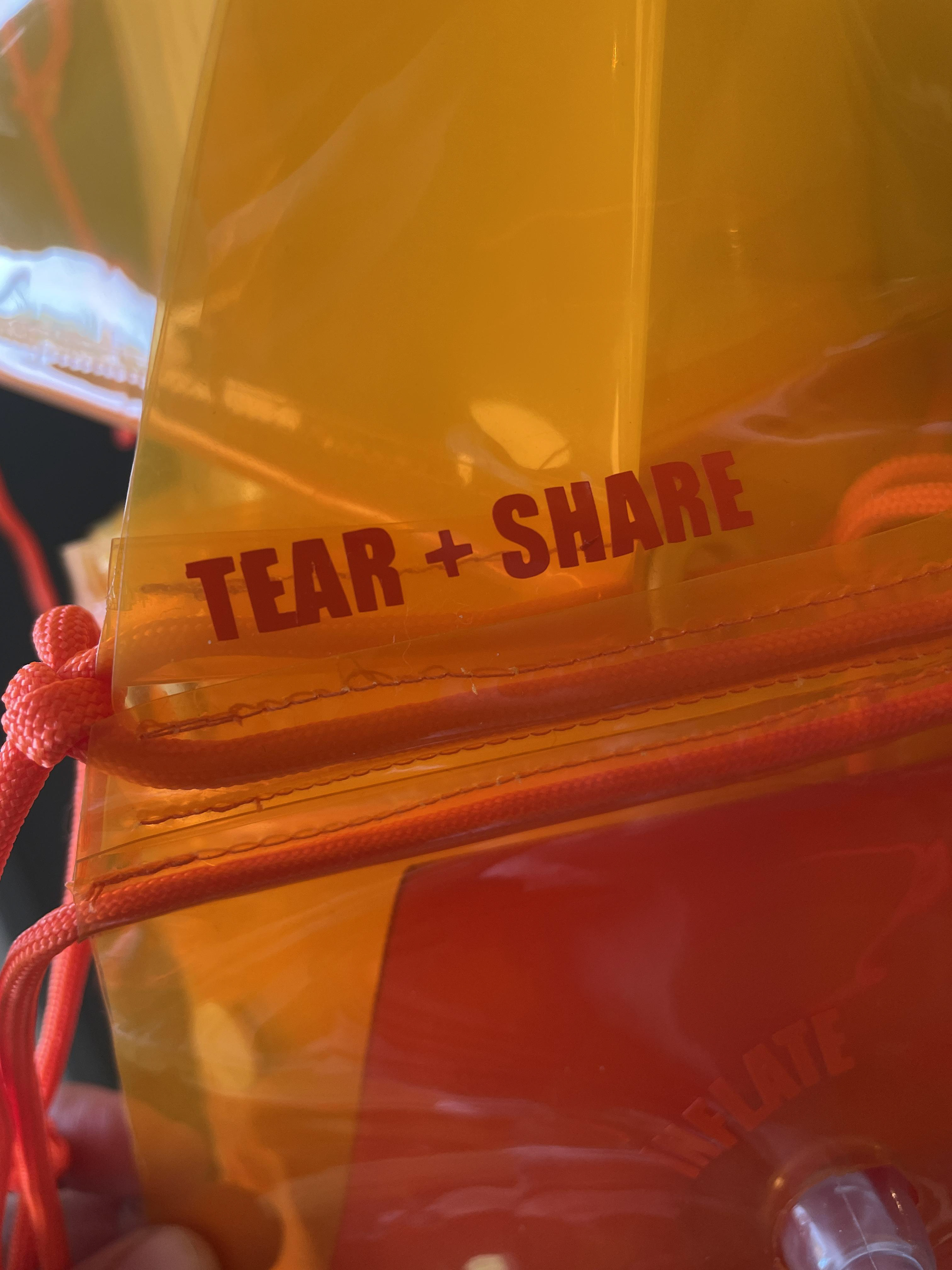

Left: "Tear + Share" inflatable piece from the ICOE waist wrap is handed off to someone in need
Right: Details of instructional elements
Everyday objects for everyday emergency.
Process // The Role of the Designer
As a designer, it’s extremely important for me to continuously consider process and material choices as they relate to their effect on both the individual, the community and the environment. While creating the ICOE garment, I did not want to create excess waste in producing a material artifact. By partnering with Quiet Town, an ethical and sustainably-focused home goods brand based out of California, I was able to repurpose their shower curtain samples and create functioning, discursive objects that encourage critical thinking and reflection.

Arrival of shower curtains!
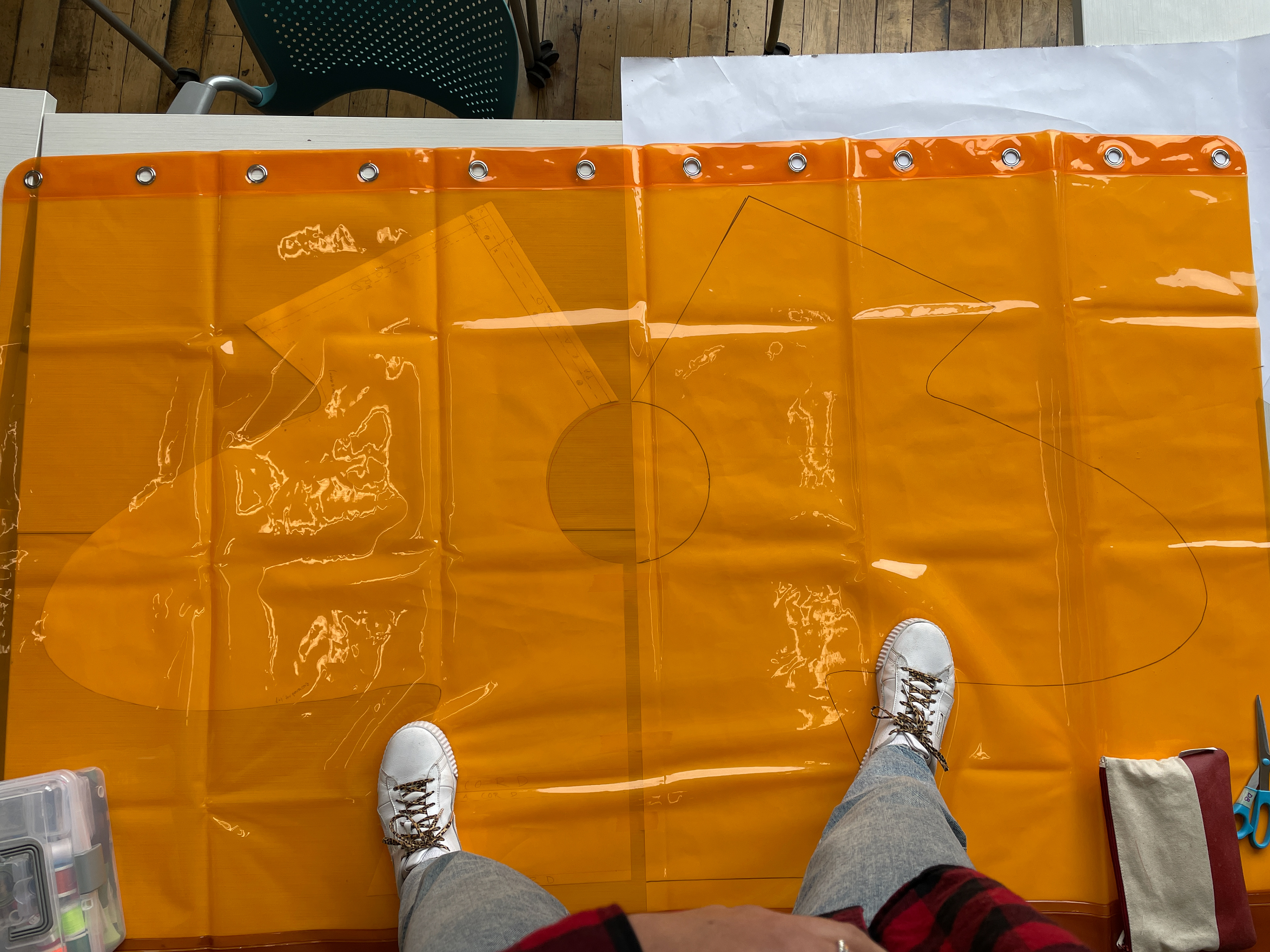
Pattern Making
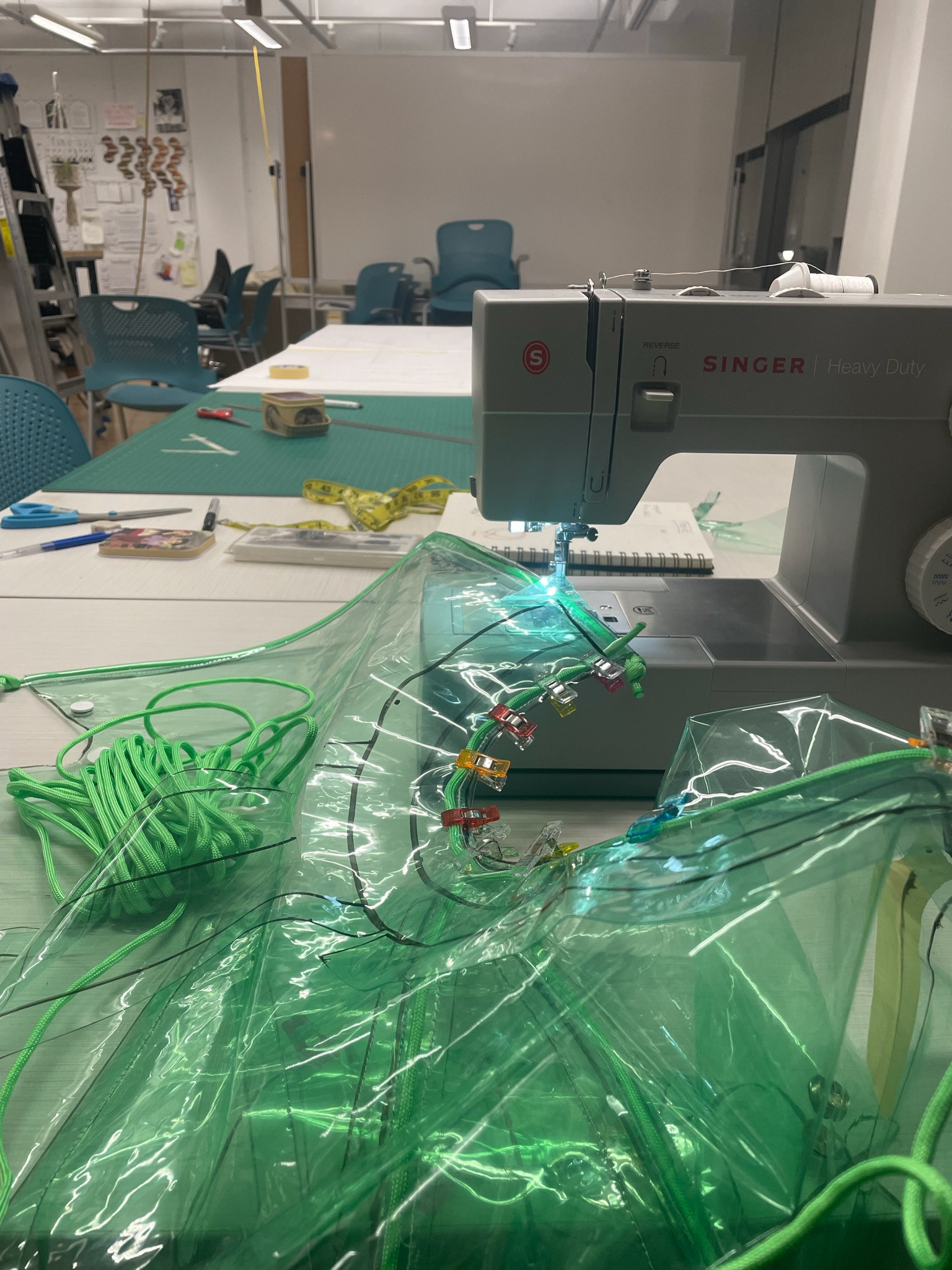
Coat Iteration
